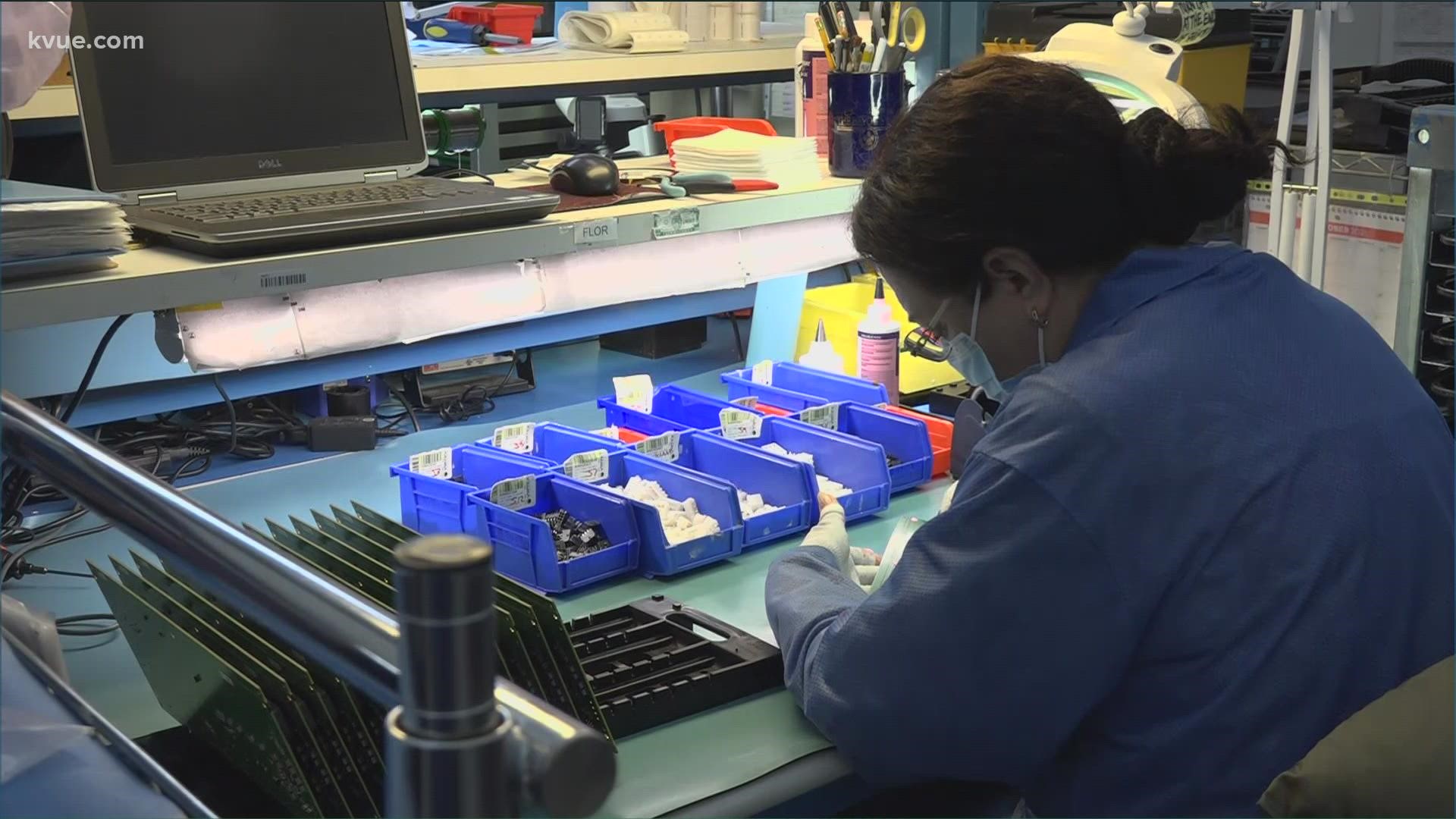AUSTIN, Texas — Monday, the Dallas Fed released a monthly survey showing the outlook on Texas manufacturing has dropped to the lowest levels since early 2021.
In the report, the Dallas Fed highlighted other metrics trending in a positive direction, including the "new orders index" and "shipments index." Experts in Austin gave mixed reviews on the report.
"With inflation allowed to continue running somewhat rampant until the interest rate hikes start to slow things down, we're going to you know, we're going to take our medicine," Tony Bennett, who leads the Texas Association of Manufacturers, said.
"I'm out there talking to people all the time, so I really look at a lot of anecdotal just conversations and evidence," Ed Latson, who leads the Austin Regional Manufacturers Association, said.
Because the manufacturing industry boasts more than two dozen sectors, some may see growth while others decline. In recent years, the computer chips and electronics sectors have led the industry's growth and resilience.
"If you really track computer and electronics in Central Texas, you can gauge the overall health of what Central Texas manufacturing is doing. That obviously is under an unprecedented boom," Latson said.
"Once we start seeing semiconductors, for example, get more plentiful ... I think it's going to start to get a little better," Bennett said. "Steel shortages, I think that will correct itself in due time. You know, if you're talking about those sorts of industries and the ripple effect of semiconductors and everything that we have electronically, particularly automotive industry, comes to mind, the component parts that come from overseas, all those things. You know, I think you will see some sectors shows an improvement."
Due to national economic influences like costs of material and labor, inflation and interest rates, Bennett believes this downturn or plateau of manufacturing production could be a trend beyond the beginning of 2022.
RELATED: Rural Central Texas counties are seeing their lowest unemployment rates since the pandemic started
"We've all become fairly used to seeing labor, raw material and energy costs, you know, approaching or already at record highs," Bennett said. "You have, you know, a slow supply chain that started with COVID, but it seems to be continuing. Some sectors that's getting better. Other sectors, there hasn't been that much change."
Bennett also cited a rise in COVID-19 restrictions in Asia for the lower, but still positive, outlook for Texas manufacturing.
PEOPLE ARE ALSO READING:

